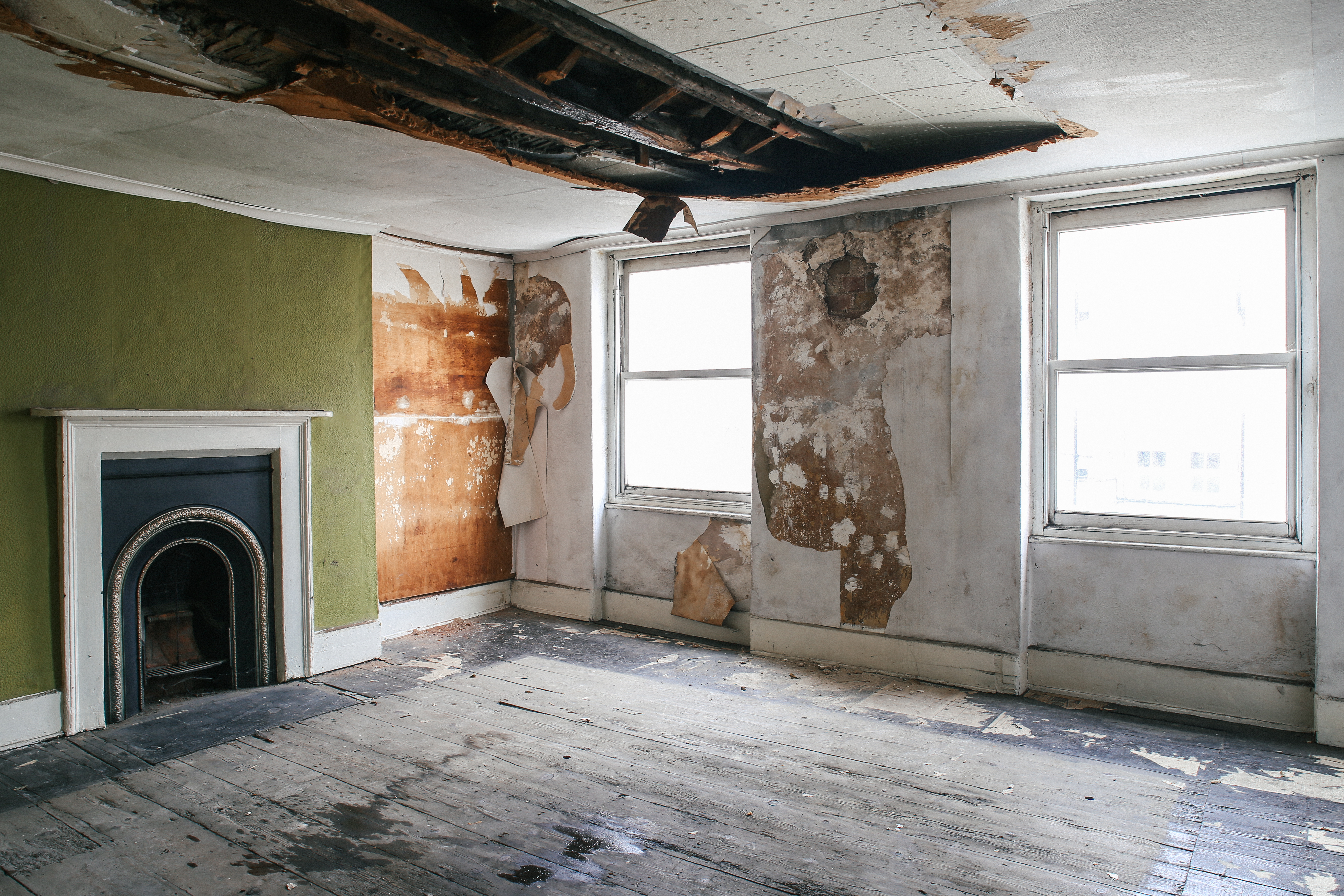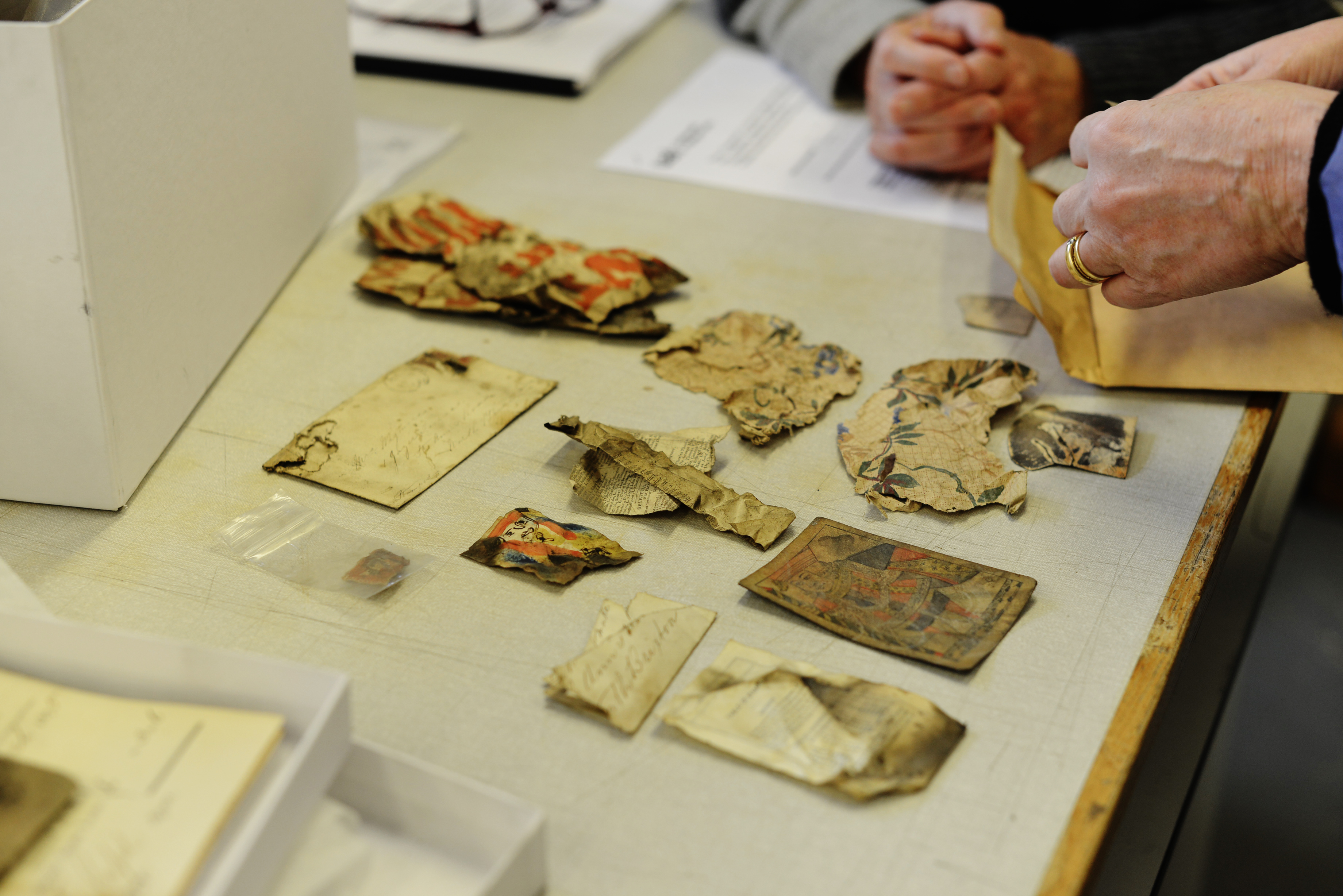Kyle, a craftsman for Triskele Conservation, carefully paints around one of the original window frames conserved by the contractors. © Claire Zhao, Van Gogh House London, 2019.

The Project
“I now have a room, as I’ve long been wishing, without sloping beams and without blue wallpaper with a green boarder.”
– Vincent van Gogh to Theo van Gogh
September 1873
Vincent van Gogh spoke warmly of his room at 87 Hackford Road in his description to Theo, but when the renovation began in July 2018, the ceiling of Van Gogh’s bedroom was collapsing due to water damage, and much of the house’s interior was being supported by metal scaffolding pillars.
The renovation was directed by Cambridge and Royal College of Art graduate Livia Wang and guided by conservation architect Andrew Shepard and Triskele Conservation, a team of craftsmen specialising in traditional building techniques and historic preservation. Led by Conor Meehan, a structural engineer and SPAB scholar, Triskele Conservation took care to repair and reinstate existing features such as the windows, doors, cornicing, and floorboards, and to employ traditional construction methods.
Following William Morris’s practice of conservation – not restoration – it is important to note that whilst the materials of the rooms remain virtually unchanged, the interiors are not reproductions of Van Gogh’s time.
Steph of Buckinghamshire based fabricators Design and Making assembles one of the bespoke cabinets. © Claire Zhao, Van Gogh House London, 2019.

Repairing the
Historic Fabric
When Triskele Conservation set foot on site in 2018, major work needed to be carried out in the roof and external flank wall, both of which were failing and structurally unsuitable. Bombing during the Blitz in the early 1940s had destroyed three neighbouring houses to 87 Hackford Road’s right. While the house narrowly escaped demolition, what was once an internal party wall had become an externally facing single skin of brick.
The solution implemented in the 1950s to reinforce the damaged brick with sand and cement had trapped water between the render and brickwork. Over time, this wall began to cave under the weight of the roof. The addition of heavy concrete roofing tiles expedited this structural demise and adversely affected the roof timbers which were disintegrating with the associated decay.
Photograph of the room believed to be where Vincent van Gogh stayed prior to the renovation. © Finbarr Falon, 2015.

Traditional Techniques
To repair this exterior wall, Triskele’s craftsmen chipped away at the concrete render and applied a stainless-steel mesh to the brickwork to strengthen the structure. This was then rendered over in lime and painted in a casein-bound limewash.
The materials used throughout the project have consistently focused on breathability, from the lime and horse-hair plaster and mortars, to linseed oil paints on all the timberwork. Unlike concrete-based mortars, hot lime mixes allow for greater movement and ultimately durability within the brickwork.
Internally, the plasterboard was scrapped and replaced with a new lath substrate, plastered with a lime and horse-hair mix. New sash windows were made for the top two bedrooms.
In keeping with the original brief to outfit the building for artist residencies and events, a spacious kitchen extension was added to the rear of the property along with an artist studio nestled within the newly landscaped garden. The design of the kitchen marries new construction with traditional methods and architecture: lime mortar and brick were used to build the new walls, while quarry tile flooring and a ceiling of exposed pine rafters were a nod to the Victorian history of the house.
Stefan of Triskele Conservation prepares a hot lime mix. © Claire Zhao, Van Gogh House London 2019.

Discoveries
During the building works, papers dating back to Van Gogh’s time were discovered hidden in the attic timbers. These finds include a set of insurance documents that bear Ursula Loyer’s signature and are dated the same years as Van Gogh’s residence at the house. Tucked in with the insurance documents was a prayer book, published in 1867 and distributed in Covent Garden.
In addition to these items, other objects and more papers were found beneath the floorboards. Such artefacts include children’s toys, handwriting samples, coloured in prints, needles, and stamps. All items have been carefully conserved by students from the Camberwell College of Art conservation course.
Artefacts found in the house at Camberwell College of Art, preparing to be restored by the students of the conservation course. © Claire Zhao, Van Gogh House London, 2019.
